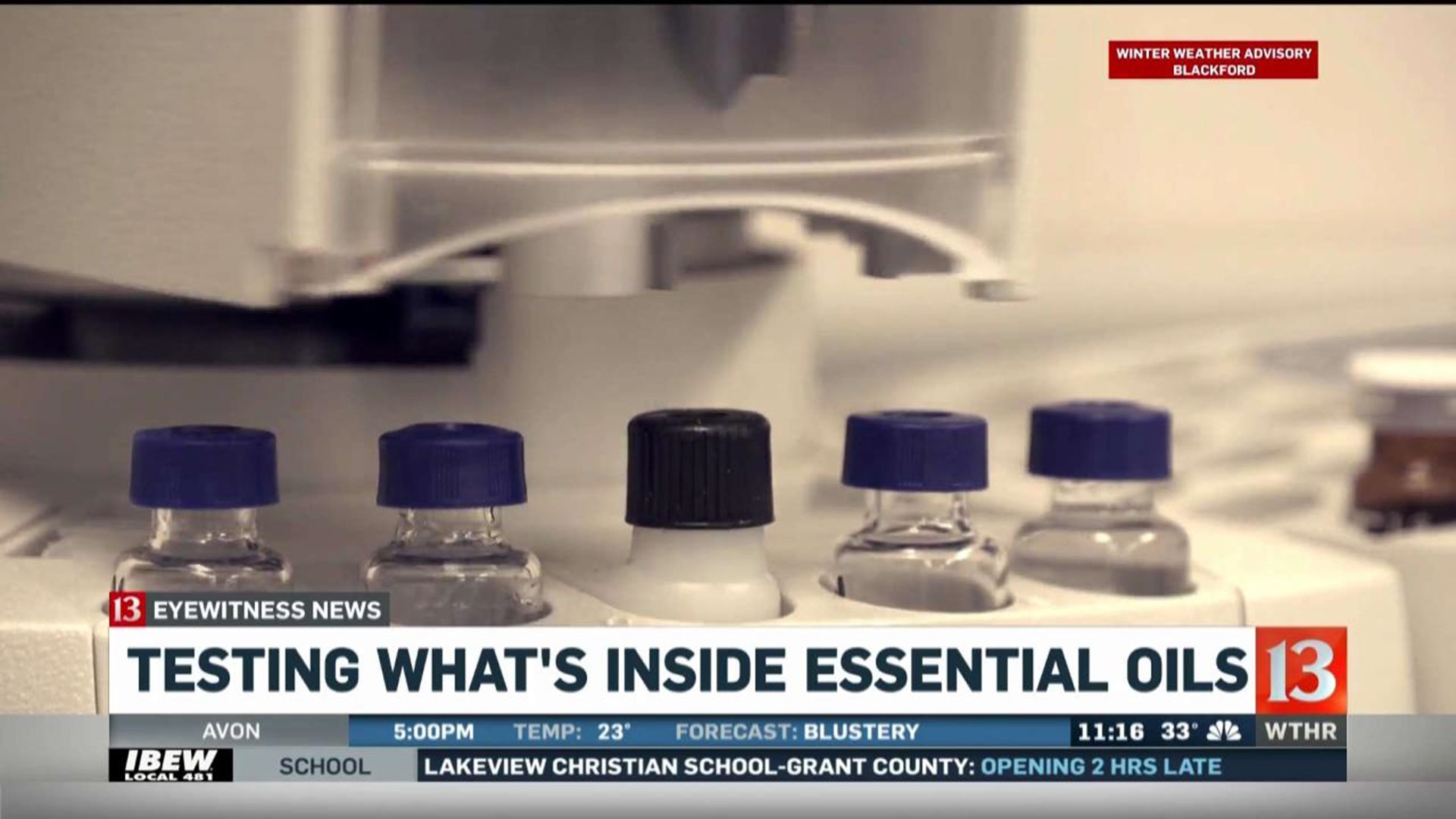LOUISVILLE, Ky. (WHAS) — From lavender and tea tree oil to eucalyptus, the essential oils market in the U.S. is expected to reach $7.3 billion by 2024, according to consulting firm Grand View Research. But how do you really know what’s inside those bottles? Focus investigative reporter Paula Vasan put them to the test.
“The demand is growing,” says Teri Amsler, Moss Hill Bath & Body Collection co-owner. “We have a customer who sprays it on her hair.”
Fans of essential oils use them in many ways. “I use lavender on my dryer balls instead of using dryer sheets,” essential oils user Allie Martin says.
Martin says she uses essential oils to soothe her migraines. “It’s really helped me. It helps me sleep.”
Essential oils are often celebrated as an all-natural solution. Some are believed to help with relaxation. Others energize. But according to Louisville-based product liability attorney Alex Davis, it’s an industry rife with misrepresentation.
“You have issues with quality control, you have issues with marketing claims that may or may not be true,” says Davis.
He says the problem with that is “you don’t know what you’re getting into.”
WHAS11 Focus investigative reporter Paula Vasan sent three essential oils with three different prices to Flora Research Laboratories in Oregon for testing. We focused on one of the most popular types: lavender.
The oils were: a bottle of Artizen Lavender Essential Oil for $8.99, an Amazon’s Choice; a $26 bottle of Revive Lavender Essential Oil; $63.82 worth of Young Living Lavender Essential Oil.
“We use advanced analytical instrumentation to look at the composition of these oils,” says James Neal-Kababick, Flora Research Laboratories director.
Based on the lab results, we discovered, despite the label, the lowest-cost oil wasn’t true lavender. Instead, Neal-Kababick says the lab results showed it was lavandin, a different plant with a less expensive oil.
As for the two other, more expensive oils we tested: “Both met the profiles for authentic lavender,” Neal-Kababick says.
So based on these lab results, how could Artizen Oils say it’s one thing, but actually be another? Our emails and calls have gone unanswered.
We also explained our findings to Amazon, asking how it’s an “Amazon’s Choice.” They told us: “...This product does not violate Amazon policies.”
Neal-Kababick says “essentially the agency charged with helping to ensure consumers are protected can’t protect consumers.”
The agency he’s talking about is the U.S. Food and Drug Administration. In general, essential oils aren’t legally held to the same standard as pharmaceutical drugs, which means there’s no federally-mandated routine testing of them.
“That’s a big issue,” Neal-Kababick says.
If essential oils claim to cure disease, as a drug would, the FDA steps in. For example in 2014, the federal agency found distributors from Young Living were marketing products as cures for “cancer,” “viral infections,” and “heart disease.”
The penalty: This warning letter.
“It isn’t held accountable the way it should be,” attorney Alex Davis says.
Allie Martin knows that’s a reality, but says essential oils will still be her everyday essentials. “Because I have seen great results for myself," she tells us.
However, she has this message to the makers of the oils: “I would really love companies to be transparent about where they’re sourcing their ingredients from.”

